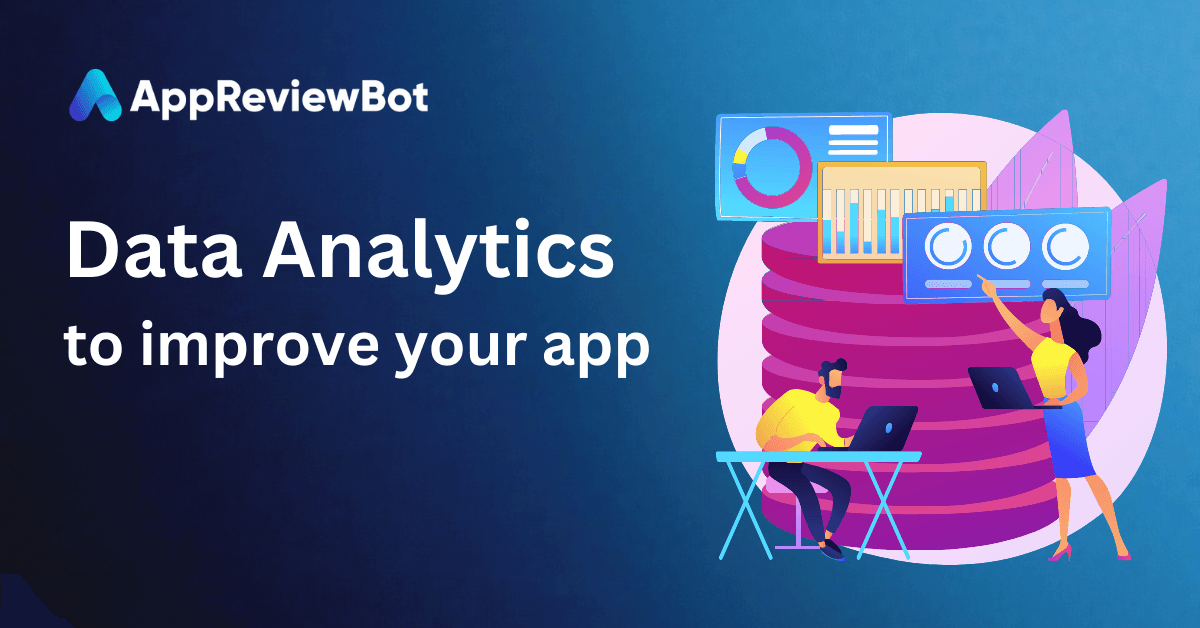How to use data analytics and user feedback to improve app retention and engagement
January 11, 2023

If you’re an app developer, there's no better moment than when your product launches and is finally available to users in the app store. But it isn't long until you realize that having a successful mobile application requires far more than just releasing said product - you need to be able to capture user retention and engagement over time. After all, what good is launching a great application if no one actually uses it? That's why we're here today: to show developers how they can use data analytics and customer feedback to measure success metrics such as user retention, engagement levels, and general satisfaction with their apps. This post will provide insightful strategies to track customer behavior to iterate upon existing versions of an application, increase overall usage rates and optimize products for customer value. Let's dive in!
Analyzing App Performance Through Data
Data analysis is a powerful tool for understanding your app's performance and helping you identify areas needing improvement. By tracking key performance indicators (KPIs), such as user engagement, retention rate, and average session length, you can gain insights into which features and updates are working best and where users may struggle to use the app effectively. This data can inform decisions about improvements or changes that could be made to enhance the user experience.
Collecting User Feedback
User feedback is essential for understanding how users interact with your app and what improvements they would like to see implemented. Surveys are a great way to get direct responses from customers who have used your app, and social media is an excellent platform for gathering user feedback. Additionally, you can use analytics tools such as heat maps to track how users navigate around the app, which can help you identify areas where users are struggling or where they need more guidance.
Applying Data Analysis & User Feedback
Once you have gathered data on app performance and collected user feedback, it’s time to start making changes or implementing new features that can improve retention and engagement. For example, if your analytics show that users are dropping off after certain pages or features, you could adjust those app elements to make them easier to use or more intuitive. You might also consider using A/B testing to compare different versions of the same feature to see which works better for users.
By strategically using data analytics and user feedback, you can make more informed decisions regarding improving app retention and engagement. This can help you create a better overall customer experience and increase user satisfaction.
Data analytics and user feedback are powerful tools that can be used in tandem to drive app retention and engagement. App developers can gain insight into user behavior and preferences by collecting and analyzing data, allowing them to deliver a more personalized experience. Likewise, leveraging user feedback provides direct input from users about what they want or don’t want from an app and can help inform developers on how to meet their needs better.
Case Studies
When used together, data analytics and user feedback can create a powerful feedback loop that helps drive significant improvements in app engagement and retention.
- A great example of this is the case study done by BookMyShow – India’s leading online movie ticketing platform. By leveraging both data analytics and user feedback, the company was able to identify key areas of improvement in their app. From there, they developed a plan to address these issues and implemented changes that resulted in a 50% increase in retention rates over three months.
- Another example is the case study done by Fitbit – a leading digital health and fitness platform. By leveraging data analytics, the company was able to identify areas of improvement in their app design and user experience, as well as pinpoint ways they could better engage users. They then used user feedback to validate these insights and further refine their approach, resulting in a significant boost in customer engagement and loyalty.
These case studies illustrate how data analytics and user feedback can be used together to drive meaningful improvements in app retention and engagement. By leveraging both tools, developers can gain deeper insights into their users and design a better experience that meets their needs. In doing so, they can ensure that their apps are successful and sustainable now and in the future.
Conclusion
By incorporating data analytics and user feedback into their app development, companies can create a powerful feedback loop that drives impactful improvements in both engagement and loyalty. With the right approach, they can ensure that their apps are successful now and in the future. Moreover, you can count on Appreviewbot.com for your mobile app retention and user engagement. Appreviewbot.com is a tool for streamlining your entire application review process. With a detailed dashboard, you can easily monitor progress on applications, manage reviews from different stakeholders, and stay organized throughout the process.